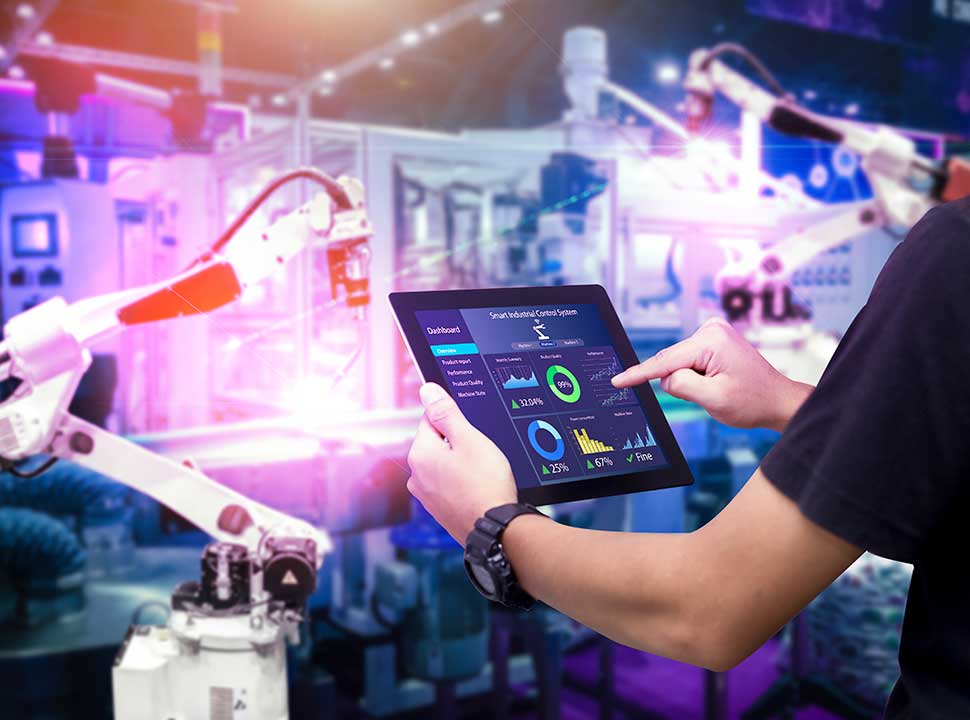9 of the Smartest Factories in the World
9 of the Smartest Factories in the World


These factories were called out by the Global Lighthouse Network for implementing IoT and technology to improve production.
Here are nine of the smartest factories in the world:
1. Alibaba (Hangzhou, China)
This fashion-and-apparel manufacturing facility utilizes cloud-based computing and IoT technologies to create an agile production system based on real-time production data. Other technology enhancements include cloud-based resourcing and cost planning, automation and robotics, and artificial intelligence (AI) to maximize quality and speed up production—for example, AI-enabled cutting machines and networked sewing equipment.
2. Micron Technology (Taichung, China)
Micron’s semiconductor memory manufacturing facility utilizes an integrated IoT and analytics approach to identify manufacturing variances and provide automated root-cause analysis, which reduced unplanned downtime by 30 percent. An advanced AI-based optical inspection system analyzes millions of product images daily, which are compared to their digital twin replicas.
3. Unilever (Hefei, China)
Unilever utilizes flexible automation, sensors, and cloud-based management systems across all its production, warehousing, and delivery segments, reducing order-to-delivery lead times by 50% and overall costs by 34 percent. AI is also used to create a more flexible, efficient, and transparent supply chain.
Take Our Quiz: How Augmented and Virtual Reality are Enhancing Manufacturing
4. Saudi Aramco (Saudi Arabia)
Khurais is the largest smart oil field in the world, with over 40,000 sensors that monitor over 500 oil wells. Saudi Aramco relies on big-data analytics, AI, robotics, and digital twins to run its operations as efficiently as possible. Wells are equipped with smart downhole sensors, control valves, and pumps to monitor and adjust flow. The company also developed its own process for maximizing fuel gas efficiency in its boilers, which has reduced fuel consumption and greenhouse gas emissions.
5. Schneider Electric (Lexington, Ky., U.S.)
This 60-year-old-plus manufacturing facility has totally transformed its operations with Industry 4.0 technologies. Its energy management strategy uses IoT, big data, and predicative analytics to reduce energy consumption and meet sustainability goals. Augmented reality, remote monitoring, and predictive maintenance are used to streamline operations, boost efficiency, and reduce overall costs. Digital management of its operations has reduced equipment downtime by 20 percent.
6. GlaxoSmithKline (Ware, U.K.)
This pharmaceutical manufacturing facility relies on neural networks, advanced analytics, and other Industry 4.0 technologies to improve quality and streamline production. Line speeds have improved by 21 percent and OEE (overall equipment effectiveness) improved by 10%. GSK has also combined digital twins, AI, and deep-learning image recognition to detect quality defects and optimize cycle time monitoring.
More for You: Industrialized Mobile Robots Take Over the Factory Floor
7. Bayer Pharmaceuticals (Garbagnate, Italy)
Bayer Pharmaceuticals utilizes machine learning, AI, big-data analytics, and digital twins to optimize the quality, efficiency, and cycle times at this facility in Italy. Augmented reality (AR) devices are also used to identify the best way to switch product lines efficiently and reduce changeover times. Process improvements are more transparent and accessible to employees on the factory floor, who get real-time updates on performance and key performance indicators, helping them make more informed decisions.
8. Bosch Automotive Diesel System (Wuxi, China)
Advanced data analytics are helping Bosch Automotive optimize its production systems, including significant savings on downtime and machine maintenance. Its digital strategy includes using radio frequency identification-based tools (RFID), equipment sensors, and other tracking technologies to monitor and evaluate real-time equipment data to maintain maximum efficiency and reduce operational costs.
9. Proctor & Gamble (Rakona, Czech Republic)
To maximize production and efficiency, Proctor and Gamble developed a strategic digital model that shortens cycle times, speeds up time to market, improves inventory operations, and makes the supply chain more agile and transparent—reducing overall plant costs by 20 percent. The company also utilizes a sophisticated optical packing system that allows recipe changes while the line is running.
Editor’s Pick: Manufacturing Blog: Hannover Messe Fair Post-Show Impressions
Getting Smarter
These smart factories show how Industry 4.0 can improve the agility of operations in responding to major market disruptions, such as the COVID-19 pandemic. IoT can maximize quality, production, and efficiency and reduce total costs, making companies more competitive on the global stage.
“This is a time of unparalleled industry transformation,” said Francisco Betti, head of shaping the advanced manufacturing and Production for the World Economic Forum. “The future belongs to those companies willing to embrace disruption and capture new opportunities. Today’s disruptions, despite their challenges, are a powerful invitation to re-envision growth. The lighthouses are illuminating the future of manufacturing and the future of the industry.”
Mark Crawford is a technology writer based in Corrales, N.M.





